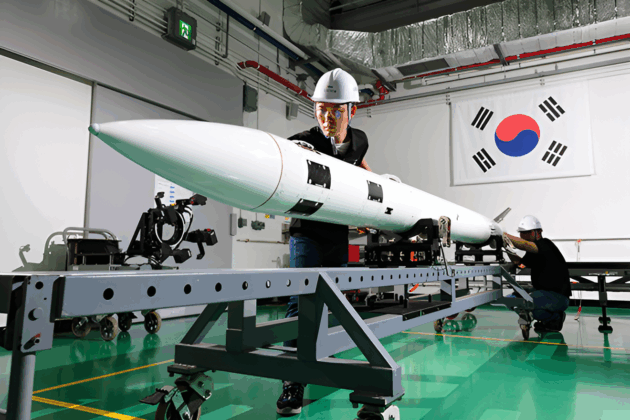
South Korean defense giant LIG Nex1 is taking bold steps to position itself among the world’s top missile developers with two cutting-edge modular missile systems, the company announced at the Fifth Aerospace Guided Weapons and Avionics Development Seminar in Daejeon.
Departing from its traditional role as a supplier of government-directed weapons systems, LIG Nex1 is now driving its own research and development efforts to anticipate future battlefield needs. The initiative centers on two systems: a 250-pound-class small modular missile and a 1,000-pound-class modular missile. Both are designed with advanced autonomy, artificial intelligence, and mission-adaptable architecture to address a wide range of operational scenarios.
“In today’s rapidly evolving warfare environment, driven by drones and AI weapons as seen in Ukraine, conventional weapons development cycles are no longer sufficient,” the company said in a statement. “Our shift to a demand-creation model enables faster innovation and positions South Korea as a global leader in next-generation missile technology.”
The 250-pound-class modular missile, comparable in size to the U.S. RTX SDB-II and Europe’s MBDA Spear missile, features carbon composite stealth construction and optional modules for thermal imaging seekers, decoys, electronic warfare payloads, and reconnaissance. Its configuration supports both gliding and engine-powered variants.
Designed for swarm operations, the missile can carry out electronic attacks against enemy drones, act as a decoy to exhaust air defense systems, or deliver precision strikes in coordinated assaults. When deployed in large numbers, the system enables sophisticated tactics such as disabling enemy radars and targeting critical vulnerabilities on hostile warships.
Concept development for the 250-pound missile is expected to conclude by 2025, with a prototype planned for 2028.
The larger 1,000-pound-class modular missile is envisioned as a networked, intelligent system capable of switching between anti-ship and land-attack roles via modular seekers and warheads. Comparable to Norway’s Kongsberg NSM in size and weight, the missile employs AI-assisted navigation and terrain-following flight at low altitudes. Ground-launched testing will begin between 2025 and 2029, followed by air-launched trials through 2032.
LIG Nex1 says both systems are designed for rapid technological integration, enabling future upgrades at a pace far exceeding legacy weapons. The modularity and autonomy also align with trends toward attritable, unmanned wingman concepts in modern air combat.
The company’s announcement signals an effort to overtake rivals such as Europe’s MBDA and Israel’s Rafael in a fast-changing global missile market, driven by increasing demand for versatile and adaptive munitions.